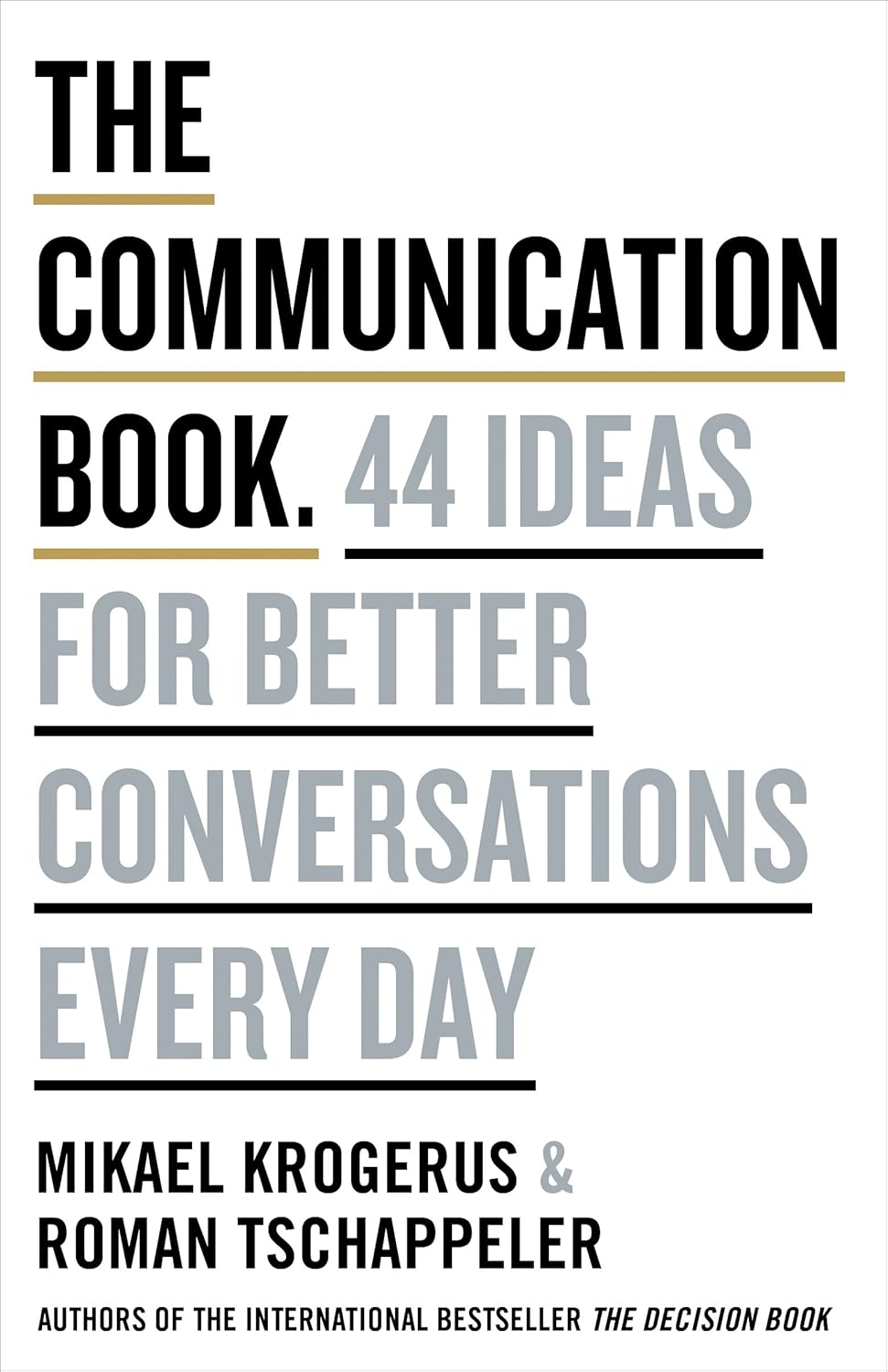



Price: ₹299 - ₹207.00
(as of Sep 18, 2024 03:13:24 UTC – Details)
The authors of the international bestseller The Decision Book teach us how to communicate better at work and in everyday life
The internationally bestselling duo Mikael Krogerus and Roman Tschäppeler have tested the 44 most important communication theories – from Aristotle’s thoughts on presenting through Proust on asking questions to the Harvard Negotiation Project – for their practicality in daily business life. In The Communication Book they distil them into a single volume that in their winning way turns seemingly difficult ideas into clear and entertaining diagrams.
From running better meetings and improving the conversations in your head to brushing up on your listening skills and small talk, the pair masterfully fuses theoretical knowledge and business advice with humour and practicality. With sections on work, the self, relationships and language, they show that we can improve not only what we communicate, but how we do so.
Whether you’re a CEO or starting out – or want to improve your relationships at home – this smartly-illustrated and compact guide will improve your communication skills and help you form more meaningful connections at work, while smiling too.
From the Publisher




Theory Of Rhetoric
Learn six rhetorical rules:
1. Anaphora: repetition of a word or phrase, typical in political speeches: ‘I demand justice. I demand understanding. I demand . . .’
2. Inversion: reversing the usual word order, such as in ‘Infinite is his sorrow’ (instead of ‘His sorrow is infinite’).
3. Irony: saying one thing when you really mean the opposite, e.g. ‘I really enjoyed being stuck in that traffic jam.’
4. Rhetorical questions: questions that make a statement, e.g. ‘Would you like shiny, glossy hair?’
5. Analogies (comparisons): ‘He stood there like a dying duck in a thunderstorm’ (banal) or ‘He was
as confused as a comma at the end of a sentence’ (creative).
6. Antithesis: a contrasting thought to produce tension,
e.g. ‘He was beautiful, strong and . . . unhappy.’


Principled Negotiation
Stick to three principles:
1. Thing, not person: do not be distracted by whether you like the other person or not.
2. Similarities, not differences: don’t think: I am in the weaker [or stronger] negotiating position. Ask yourself: What does the other person need from me? Do we have common interests?
3. Good enough, not perfect: you should not be aiming for the maximum possible. Because perfection is like the unicorn: it’s rumoured to exist, but nobody has ever seen it. So, alongside your desired outcome to the negotiation, have a Plan B prepared before negotiations even start. This is called the BATNA Principle (Best Alternative to a Negotiated Agreement). It offers the best alternative when an agreement can’t be reached.


When We Think Of The Best Arguments
Four tricks to avoid being nervous:
1. Expose yourself repeatedly to the same situation (so‑called
‘practice under pressure’), whereby the situation loses its uniqueness.
2. Wait five seconds before answering – your answer
might not be any cleverer, but it comes across as weightier.
3. Not so easy: imagine that you’re not in an interview
but sitting in the pub with friends.
4. Keep in mind that although being quick-witted can be impressive in an interview, it is seldom required in most jobs.


Fake News
How to identify fake news:
Who? by answering ‘who’ said it, we divert our attention to the sender. Lasswell called this ‘control analysis’: who is talking? What is their aim? Who are their allies?
What?: by looking at ‘what’ is being said, we give attention to the actual message (the ‘content
analysis’) – to identify the aim behind the message we can, for example, ask: how are women or people of colour represented? What does the phrasing imply?
Which?: by answering the ‘which channel’ question we make a ‘ media-analysis’: why are they using this channel? How can they afford it? Who paid for it?
To Whom?: the ‘audience analysis’ can, for example,
reveal something about the aim of the sender: why are they talking specifically to these people?
With What Effect?: with the ‘effect analysis’ we ask: how did the audience react? What does this tell us about the sender?


Publisher : Portfolio Penguin (1 January 2018)
Language : English
Hardcover : 208 pages
ISBN-10 : 0241982286
ISBN-13 : 978-0241982280
Item Weight : 130 g
Dimensions : 19.7 x 12.9 x 1.42 cm
Country of Origin : United Kingdom
Net Quantity : 1.00 count
Generic Name : Book
Customers say
Customers find the book excellent and a must-read. They say it provides great ideas and facts in short words. Readers also say it builds up a good understanding and elevates communication. They mention it provides actionable insights and practical advice on how to improve communication skills.
AI-generated from the text of customer reviews







